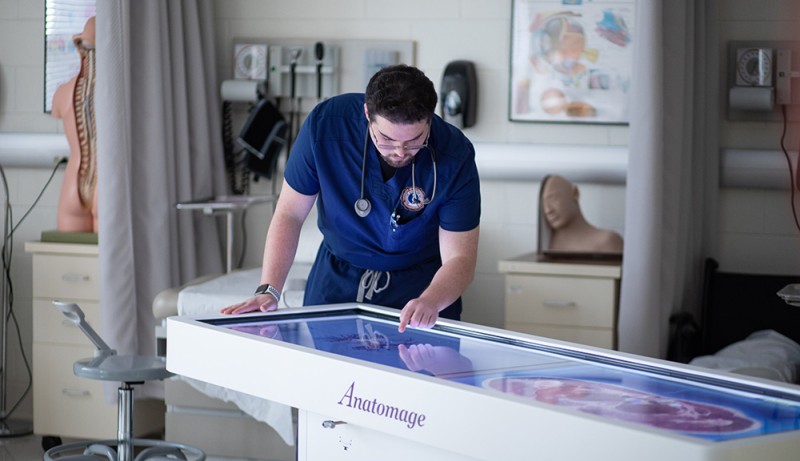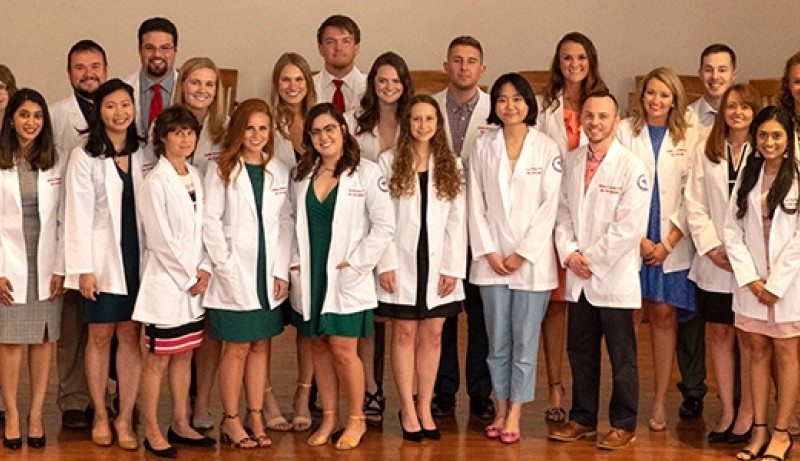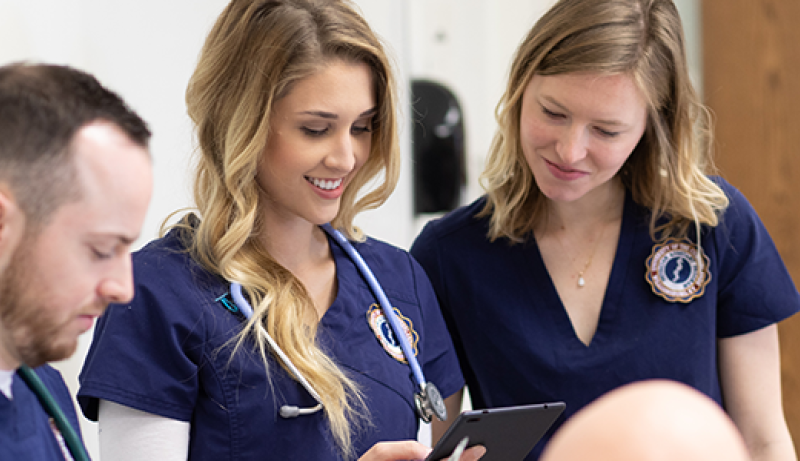Doctors aren't the only ones who can bring better health to our communities.
If you’re ready to advance your medical career without committing to several additional years of medical school, University of the Cumberlands offers the solution. Our Master of Science in Physician Assistant Studies (MSPAS) program is an accredited physician assistant graduate program available at both our Williamsburg and Northern Kentucky campuses. With a recent 100% PANCE pass rate at both locations, you can be confident you’ll receive the highest quality physician assistant education and training.
At Cumberlands, the master’s in physician assistant studies program is designed to prepare you for success as a skilled and compassionate PA. Through a combination of rigorous classroom instruction, pre-clinical sciences, and clinical rotations, you’ll gain the knowledge and hands-on experience needed to thrive in today’s healthcare field. Our curriculum covers everything from patient assessments and medical procedures to clinical medicine, pharmacology, and evidence-based care.
With the option to complete your PA program in as little as 27 months, you can enter the healthcare workforce sooner—equipped with the advanced clinical skills, critical thinking abilities, and practical training required to make a meaningful difference in patients’ lives.
By the Numbers
Our PA Programs



Curriculum
Our accredited Master of Science in Physician Assistant Studies (MSPAS) is designed to teach you the skills you need to provide medical care to patients and can be completed in as little as 27 months.
Requirements include 113 credit hours, 68 of which are earned through didactic coursework in traditional classroom and laboratory settings. All didactic coursework takes place on campus.
The remaining 45 hours of the master's in physician assistant studies program are earned during the second year in the program. Through 10 supervised clinical rotations in the field, our physician assistant program provides students with real-world experiences in family, internal, and emergency medicine; surgery; psychiatry; pediatrics; and women’s health.
Take the Next Step
Physician Assistant Career Information
*All information from the U.S. Bureau of Labor and Statistics
What PAs Do:
What PAs Do:
Physician assistants, also known as PAs, examine, diagnose, and treat patients under the supervision of a physician.
Duties of a PA:
Duties of a PA:
- Obtain and review patients’ medical histories
- Examine patients
- Order and interpret diagnostic tests, such as x rays or blood tests
- Diagnose a patient’s injury or illness
- Provide treatment, such as setting broken bones, stitching wounds, and immunizing patients
- Educate and counsel patients and their families on a variety of issues, such as treatment and self-care for asthma
- Prescribe medication
- Assess and record a patient’s progress
- Research the latest treatments to ensure quality of patient care
Specialties:
Specialties:
- Primary care
- Family medicine
- Emergency medicine
- Psychiatry
- Surgery
- and more!
Job Statistics:
Job Statistics:
Physician assistants held about 139,100 jobs in 2021. The largest employers of physician assistants were as follows:
- Offices of Physicians: 51%
- Hospitals; state, local, and private: 23%
- Outpatient Care Centers: 10%
- Educational Services; state, local, and private: 4%
- Government: 2%
Median Pay By Industry:
Median Pay By Industry:
In May 2021, the median annual wages for physician assistants in the top industries in which they worked were as follows:
- Outpatient Care Centers: $128,430
- Hospitals; state, local, and private: $127,240
- Office of Physicians: $121,010
- Government: $106,910
- Educational Services; state, local, and private: $101, 040
Expectations:
Expectations:
Most physician assistants work full time. Work schedules vary and may include nights, weekends, or holidays. Physician assistants also may be on call, meaning that they must be ready to respond to a work request with little notice.
Common Questions
A Master’s in Physician Assistant Studies (MSPAS) is a graduate-level program designed to train students to become highly qualified healthcare professionals. The program equips students with the knowledge, skills, and credentials necessary to provide primary care to patients while working under the supervision of a licensed physician.
The MSPAS program at the University of the Cumberlands can be completed in as little as 27 months. This includes both didactic coursework and clinical rotations, allowing students to gain comprehensive knowledge and practical experience in a relatively short period.
No, the MSPAS program at the University of the Cumberlands is offered on-campus at their Williamsburg and Northern Kentucky campuses. The program requires hands-on clinical training and laboratory work, which cannot be completed online.
Yes, a master’s in physician assistant studies is considered worth it due to the high demand for physician assistants, excellent job prospects, and competitive salaries. The average salary for a physician assistant is $121,530, with a projected industry growth of 31%, making it a lucrative and stable career choice.
With an MSPAS degree, you can work as a physician assistant in various specialties, including primary care, family medicine, emergency medicine, psychiatry, and surgery. PAs examine, diagnose, and treat patients, order and interpret diagnostic tests, prescribe medication, and educate patients and their families about medical conditions and treatments.
To get a master’s in physician assistant studies, you must first earn a bachelor’s degree and meet the prerequisite coursework and entrance exam requirements. After being accepted into an accredited MSPAS program, you will complete 113 credit hours of coursework and clinical rotations. Upon graduation, you must pass the Physician Assistant National Certifying Exam (PANCE) to become a certified physician assistant.
Click the NKY or Williamsburg tab above to find the prerequisites for the accredited physician assistant program from University of the Cumberlands.
Candidates may have their bachelor’s degree and/or prerequisites in progress, as long as both are complete prior to matriculation. The only exception is if students are admitted through the early admissions process at University of the Cumberlands (Pre-PA track).
All applicants must apply and follow the CASPA application guidelines. A University of the Cumberlands Supplemental application and $30 application fee are also required. The link to the supplemental application will be provided once your CASPA application has been verified.
- Williamsburg: Application cycle opens in April with the CASPA opening and closes August 1.
- Northern Kentucky: Application cycle opens October 1 and closes March 1.
Annmarie Sagraves, PA-CThe knowledge and skills I gained during PA school set the foundation for how I practice as a PA today. I am reminded to stay flexible, work hard as a team, and be open to questions.
BS 2016, MSPAS 2019
Request Information
Learn more about all that Cumberlands has to offer.

